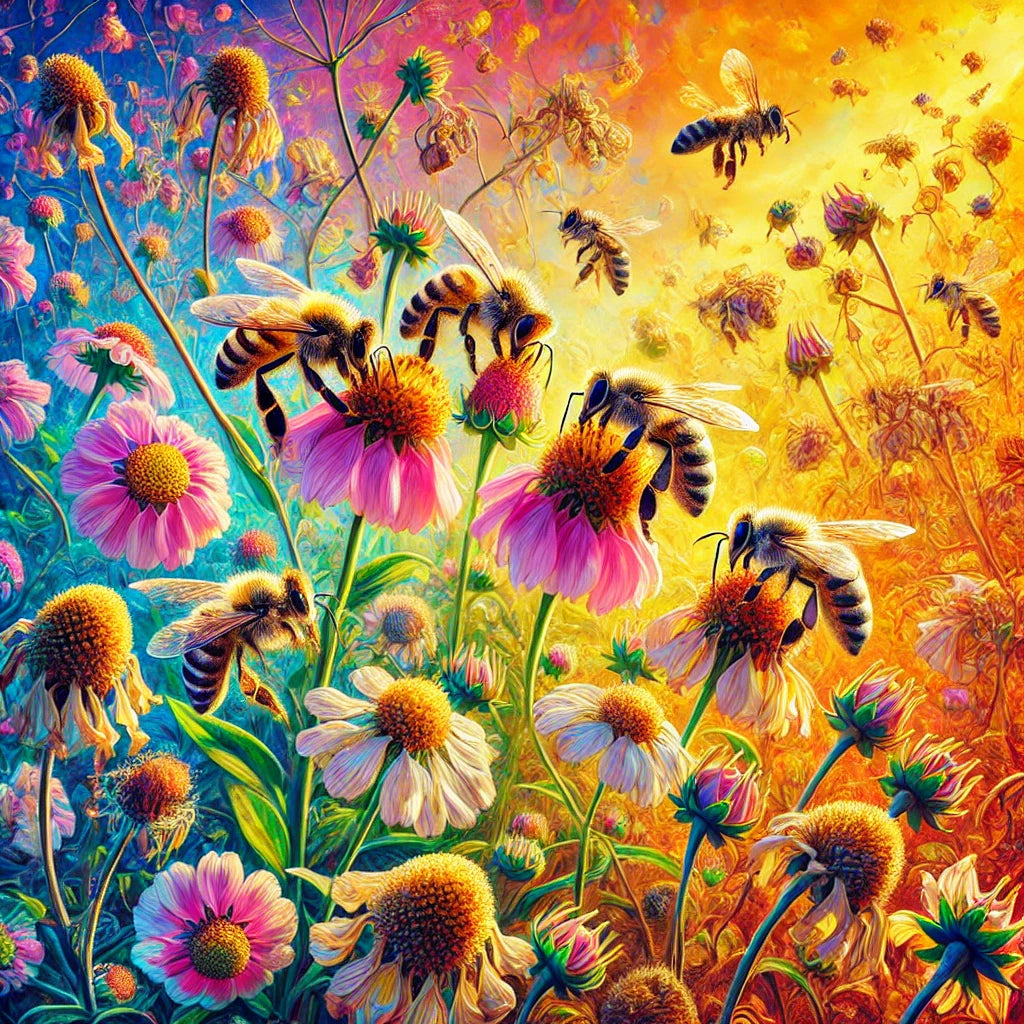Climate change is posing a significant threat to bee populations worldwide, particularly affecting their nectar collection patterns. Bees rely on environmental signals, such as temperature and the timing of plant flowering, to coordinate their foraging activities. However, as the climate shifts, these natural cues are becoming unpredictable, leading to a mismatch between the availability of flowers and the bees' foraging behavior.
1. Disrupted Flowering Seasons
The synchronization between bees and their primary food sources—flowering plants—is becoming increasingly disrupted. Warmer temperatures cause flowers to bloom earlier than usual, while some bee species maintain their traditional foraging schedules. This misalignment, known as phenological mismatch, reduces the availability of nectar when bees are actively foraging, causing them to struggle to collect enough nectar to sustain their colonies. Research suggests that bees like honey bees and bumblebees may be particularly vulnerable to this as their activity is closely tied to seasonal rhythms.
2. Impact of Temperature and Weather Extremes
Bees are sensitive to temperature changes and weather patterns. Extreme heat, droughts, or unseasonal cold spells make it difficult for bees to forage effectively. High temperatures can dry up flowers, reducing nectar availability. Conversely, cold spells during blooming seasons can prevent bees from flying out to collect nectar, causing interruptions in their food supply.
Data shows that bumblebees and honey bees both react strongly to weather conditions, altering their flight and nectar collection patterns in response to temperature and humidity changes. Prolonged droughts, a result of climate change, reduce the number of flowering plants, which directly impacts the nectar bees can collect.
3. Shifts in Bee Habitats
Climate change also forces bees to shift their habitats to areas with more favorable environmental conditions. As temperatures rise, some bees may migrate to higher altitudes or cooler regions. While this shift allows them to continue foraging, it limits the variety of nectar sources available to them, particularly in mountainous or isolated regions, which may not have the same diversity of flowering plants.
Human activity's fragmentation of habitats compounds this issue, as bees struggle to find suitable environments that provide shelter and diverse nectar sources.
4. Reduced Flower Diversity
Another significant challenge for bees is the loss of biodiversity due to habitat destruction and climate change. When plant species decline or disappear, the diversity of nectar available to bees decreases. This makes it harder for them to collect the variety of nutrients needed to maintain healthy colonies. Without diverse nectar sources, bee colonies can weaken, leading to a decline in their populations.
Moreover, certain bee species, particularly those that specialize in foraging from specific plant types, are disproportionately affected by these changes. The Bilberry Mining Bee, for example, is highly specialized and relies on a limited range of plants, making it vulnerable to climate-induced changes in plant populations.
5. Competition for Resources
As climate change forces some species to migrate, the competition for limited nectar sources intensifies. Bees may find themselves competing with other pollinators, such as wasps, butterflies, and even other bee species, for the same plants. This increased competition can further reduce the amount of nectar available to individual bees, making it harder for colonies to thrive.
Equip Your Beehive with Swarm Commander Solutions
In conclusion, climate change's impact on bees' nectar collection patterns is profound and multifaceted. From disrupting flowering seasons to causing habitat shifts and reducing flower diversity, the challenges posed by climate change threaten the survival of bee populations. The continued decline in bee populations not only affects the bees themselves but also poses a risk to global agriculture, as bees play a critical role in pollinating crops.
Climate change is here, and it’s essential to give your bees the best chance of survival. Swarm Commander offers a wide range of beekeeping tools, including bee trap attractants,and beetle traps for beehives to help protect and manage your hive. Adapt to the challenges of climate change with Swarm Commander’s high-quality beekeeping products.
Frequently Asked Questions About How Climate Change Affects Bees' Nectar Collection Patterns
Q1. How does climate change impact bee populations?
Climate change alters flowering seasons and temperature patterns, disrupting bees' ability to collect nectar and thrive.
Q2. Can bees adapt to changing climate conditions?
While some bees migrate to more favorable habitats, this often leads to reduced nectar sources and increased competition for food.
Q3. What role do bees play in agriculture?
Bees are vital pollinators for many crops, making them essential for global food production. Climate-induced declines in bee populations could significantly impact agricultural yields.
Q5. How can I help protect bees from the effects of climate change?
Providing diverse and bee-friendly habitats, reducing the use of pesticides, and supporting products like Swarm Commander can help bees survive environmental changes.



